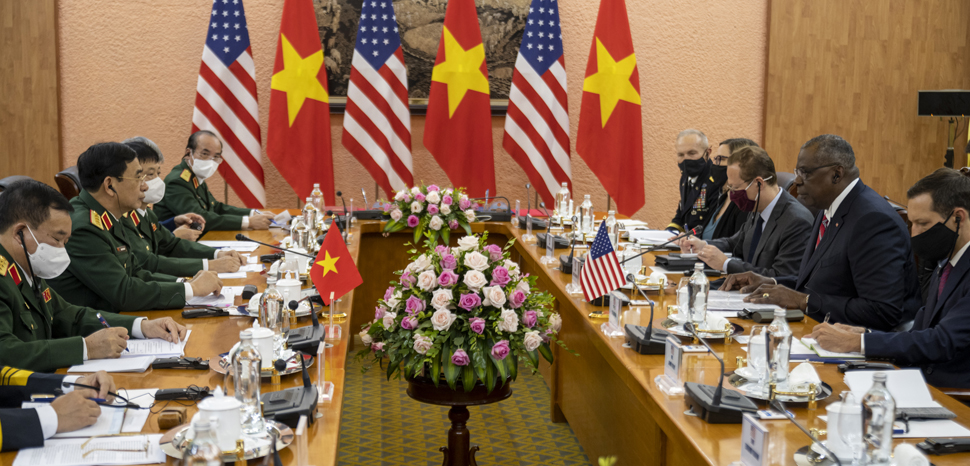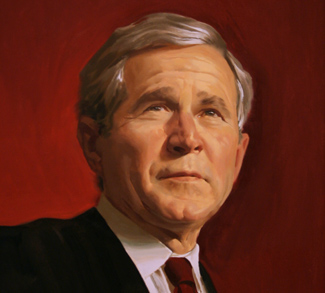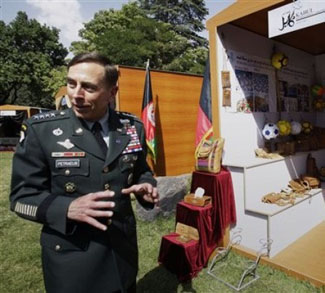When Vice President Kamala Harris arrives on August 24 at No Bai International Airport following her two days in Singapore, she will face challenges in strengthening Washington’s strategic security alignment with a former enemy, Vietnam, in part out of a shared concern about China’s growing military power and assertive influence in the South China Sea.
The energetic Harris, an Asian-American whose mother was of Indian heritage, will be the first US vice president to visit Vietnam. Although she has vigorously taken on the Biden administration’s charm offensive to advance America’s Indo-Pacific vision, drawing upon the critical linkages between economics, governance and security, her timing could not be worse since America has just withdrawn its forces in Afghanistan, leaving the world to compare the fall of Saigon with the Taliban takeover of Kabul.
Earlier this year, President Biden reinforced the administration’s priority in partnering with Asian nations: “We will deepen our partnership with India and work alongside New Zealand, as well as Singapore, Vietnam, and other Association of Southeast Asian Nations (ASEAN) member states, to advance shared objectives.”
Despite the differences in political systems and ideologies, the new administration regards Vietnam as a constructive geopolitical ally. However, Hanoi’s governing structure, the Communist Party, remains distrustful of the U.S. to counter China since there’s always fear that Washington may demand more than human rights improvements. The trajectory of this relationship goes beyond the half-century marker since the end of the Vietnam War.
The vice president’s trip comes on the footsteps of Defense Secretary Lloyd Austin’s meeting in Vietnam last month, where new areas of cooperation were reached, including: military medicine to combat COVID-19, future discussions to explore each other’s needs and capabilities in national defense, and a Memorandum of Understanding for U.S. assistance to locate, identify, and repatriate the remains of Vietnamese soldiers missing in action during the Vietnam War.
“Continuing US-Vietnam reconciliation shows other nations that it is possible to become true friends and collaborators,” claims Ted Osius, former U.S. Ambassador to Vietnam, in an email earlier this week.
These new areas of agreement have been bolstered by the dismissal of the U.S. Trade Representative’s Office charges of currency manipulation against Vietnam, fueled by a ballooning trade deficit. However, in a run-up to vaccine diplomacy competition, the U.S. has donated five million doses of the Moderna vaccine to Hanoi.
Since China has been a major Covid vaccine supplier for much of the developing world, the Biden administration wants to catch up and has chosen to become a formidable competitor to China. “Health diplomacy, which had attracted limited attention compared to political, economic, and military diplomacy, has gained new importance over the last year,” claims Shiming Yang, a PhD candidate at the University of Southern California.
Meanwhile, America has honored its commitments to Vietnam to address the legacy of the War, from unexploded ordnances (UXO), demining, dioxin cleanup, and MIA remains. In recent years, the formation of the Mekong-US Partnership has also provided support for the Lower Mekong region.
While this commitment includes other countries, the U.S. has pledged at least $153 million for collaborative projects in the region, including addressing climate change. Over the past several years, Vietnam’s Mekong Delta has experienced historic devastating droughts and floods. Record low water levels in most of the waterways and rivers are causing saltwater intrusions that reach far inland, wiping out crops and contaminating water supplies.
“Harris’ big message is that the U.S. is committed to Southeast Asia, something that was beginning to be doubted in the region in the first six months of the administration, when its senior officials focused on Japan, Korea, China, India, and the Quad”, says Murray Hiebert, Head of Research at Bower Group Asia in a recent email.
Washington understands the common and strategic bridge with Vietnam since both nations share mutual concerns about China’s mounting economic and military power. Naturally, it has taken decades of purposeful actions and cautious steps to patiently re-stitch the threads from both visible and invisible deep war wounds. There are many highlights of the US-Vietnam trust-building measures, and these are only a few that offered impactful geopolitical symbolism.
Several high profile image-building meetings included former President Barack Obama’s White House reception for Vietnam’s Nguyen Phu Trong, Vietnam’s Communist Party Chief in July 2015; followed by Obama’s visit to Vietnam in May 2016, resulting in the lifting of the arms embargo, which continued to boost relations. Also, Vietnam hosted the 2017 Asia-Pacific Economic Cooperation summit, which brought former president Donald Trump to Da Nang.
These calculated initiatives contributed to a rebalancing away from a focus on communist ideology, toward a shift to strategic ties.
However, Carlyle Thayer, Professor Emeritus at UNSW Canberra, believes that from Hanoi’s point of view, its relationships with China at present is “as good as it gets.” He also says that Vietnam’s leaders are reluctant to initiate any new form of defense cooperation with the U.S. that goes beyond the 2011 Memorandum of Understanding on Advancing Defense Cooperation and the 2015 Joint Vision on Defense Relations.
Since the normalization of relations between the United States and Vietnam, bilateral trade reached $90 billion in 2020, representing a 17% increase from the previous year. America is Vietnam’s second-largest trading partner. Vietnam’s integration with the West has opened up major opportunities to work with the world’s developed and international organizations, including the World Bank and the Asian Development Bank.
Policy experts have witnessed the rapid transformation of Vietnam’s economic liberalization, financial freedom and market openness. This march forward began in 2001 with the signing of a US-Vietnam bilateral trading agreement that accelerated Vietnam’s entrance into the World Trade Organization. Now Hanoi seeks reclassification of its status as a non-market economy to market economy, along with its re-designation as a developing country in the WTO.
The White House seems genuinely worried about China’s global ambitions and this includes its efforts to control South China Sea. As a result, the emerging strategy is to secure strategic partners, like Vietnam, although analysts recognize that this will be a lengthy and drawn out process.
“Vietnam will want reassurance that the Biden Administration will not invoke legislation and impose penalties on Vietnam on human rights grounds,” adds Thayer in a forwarded email interview.
Nevertheless, expect Harris to amplify messaging that the U.S. will not allow China to undermine freedom of navigation operations in the disputed body of water.
This policy move is a capstone of Washington’s vision for a Free and Open Indo-Pacific (FOIP), that embraces adherence to international laws and rules, respect for sovereignty, peaceful resolution of disputes, and free, fair and reciprocal trade. The U.S. Navy, which maintains 60 percent of its fleet in the Indo-Pacific region, conducted tri-carrier strike force operations there in 2017 and 2020.
Beijing needs no reminder of the defense cooperation since Hanoi allowed U.S. Navy port calls in Da Nang by the U.S. aircraft carrier, the USS Carl Vinson in March 2018, and the USS Theodore Roosevelt in March 2020. The granting of these port calls translates as an endorsement of Washington’s deterrence against China’s hegemonic South China Sea actions.
Furthermore, Washington has sold unarmed surveillance drones to Vietnam placing China on notice, and has received U.S. military hardware, including coastguard cutters.
Defense Secretary Austin, during his recent Vietnam visit, made America’s policy clear. “One of our central goals is ensuring that our allies and partners have the freedom and the space to chart their own futures.”
For many Hanoi observers, the central question is how Vietnam can or should engage with Washington’s Indo-Pacific strategy, while it continues to balance a constructive relationship with Beijing. After all, the relationship between Hanoi and Beijing has been complex and tricky for a thousand years.
Although they share a border and Communist party ideology, there have been chronic border wars and disputes for centuries between the two neighbors. In recent years, any cooperation has been checked by maritime sovereignty disputes and Chinese attacks on Vietnamese fishing vessels in the South China Sea, or the East Sea, as it is known in Vietnam.
For now, the Biden White House needs to offer Vietnam less charm and more lures to net them into a recalibrated ‘America is back’ commitment toward Southeast Asia.
The views expressed in this article are those of the authors alone and do not necessarily reflect those of Geopoliticalmonitor.com




